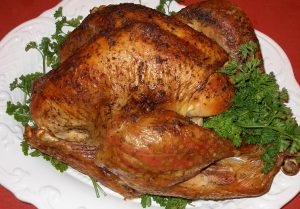By Jason Masters
Environmental Health Director

A
Q: : Hi Jason, as summer and hot weather approaches, what do I need to know about protection from mosquitoes, and what role would mosquitoes play in the event of a zombie apocalypse? I want to be prepared…
-Rachael
A:
Wow Rachael, that’s a really great question… (and I thought I was paranoid…).
The summer months are filled with music, food, fun and skeeters. These little buggers can turn a fun evening into a tormented level of Dante’s inferno.
So here’s what you need to know about mosquitoes, (don’t worry, we’ll get to the zombies later) and how to protect yourself. First, you need to understand where mosquitoes like to hang around, and why. There are approximately 60 species of mosquitoes in NC, and they all like to hang out at pools of water (just like us!) but they want to do more than just take a dip and suck down a cherry coke…they want to lay their eggs in nice, cool, stagnant pools of water. You know where there are some really great pools of nice, cool, stagnant water? How about that lawnmower you’ve been meaning to fix? Does that collect any water? Or how about those 5 gallon buckets you were going to use to brew beer that time, but then you had a kid and now they just stay stashed away under your deck? Do those hold water? What about those holes in that tree in the yard where those branches broke that time in the rain storm, but all you did was get mad because they fell on top of your jeep? I bet those holes fill up with water now. And don’t forget that birdbath that you got as a birthday present from your elderly neighbor, even though nobody really uses birdbaths anymore. Heck, those things are MADE to hold water! That old pair of shoes that your significant other wanted to throw away, but you swore you would use for gardening? Totally full of water now.
My point is, there are hundreds of things that collect water outside your house that you may not recognize, and they are perfect spots for mosquitoes because you have forgotten about them. This is the exact reason for the “tip and toss” campaign. This campaign was designed to increase awareness of items around the home that have the potential to become larval breeding sites for mosquitoes. If you see something collecting water, tip it, and toss it in the trash.
Now, let’s look at what actually draws mosquitoes to you. According to webmd.com, mosquitoes are drawn to heat, movement, and carbon dioxide, and some people are just more genetically inclined to be attractive to mosquitoes due to their bodies abilities to process certain compounds like cholesterol and uric acid. That’s why you always seem to be targeted while you are engaged in that neighborhood volleyball game.
Mosquitoes have the ability to carry lots of awful illnesses, including LaCrosse encephalitis, west nile, Zika, malaria, dengue, chikengunya, eastern and western equine encephalitis, Saint Louis encephalitis, and yellow fever. (Ain’t nobody got time for that…”)
There are several ways to protect yourself from mosquitoes, and probably the most well-known is our old friend, DEET. N,N-diethyl-meta-toluamide was developed by the US government in the 1940s, and was put into use for the general public in 1957. It has been deemed safe by the EPA for direct application to the skin with minimal side effects, and the American Academy of Pediatrics has stated that concentrations of DEET at 10% or less are safe to use on infants over 2 months old. However, there are alternatives. Picaridin (Cutter Advanced) has been shown to be just as effective as DEET, with a lighter feel and smell, and IR3535 (Avons skin-so-soft) is sometimes marketed as a mosquito repellant, although much less effective than DEET. (“Hey look at Billy down there, them skeeters ain’t botherin’ him, and dang! His skin sure is soft…”)
There are some non-chemical alternatives available as well, but they provide considerably less protection than our chemical friends. Citronella, peppermint, and lemon grass (among others) may provide protection for up to about an hour and a half. Oil of lemon eucalyptus (marketed as Repel) can provide protection similar to that of low concentrations of DEET.
Which leads me to zombies…
Have you ever seen a zombie move?!? Except for what we have recently seen on “The Walking Dead”, traditional zombies are extremely slow moving. Historically, zombies wander around malls and suburbs and attack people that get close, but they have never been known to catch fleeing prey. Very little movement here for mosquitoes to detect. Additionally, due to zombies being dead and all, they aren’t going to be breathing as much (or at all) so their carbon dioxide output is minimal at best. That’s strike two against zombies. Finally, they don’t have any bodily processes going on, so whatever they are eating (brains) is just sitting in their rotten tummies. Biologically speaking, the case for zombies is weak. There are no studies showing that mosquitoes would be attracted to zombies, so I’d say the threat of mosquitoes being a vector of whatever turned the zombies into zombies is very low (non-existent).
With that being said, there is no evidence to suggest that DEET provides any amount of protection from the living dead. Stay safe, friends…





